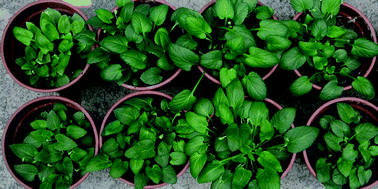A study on the effects of lead, cadmium and phosphorus on the lead and cadmium uptake efficacy of Viola baoshanensis inoculated with arbuscular mycorrhizal fungi
Abstract
The effect of indigenous arbuscular mycorrhizal (AM) fungi on lead (Pb) and cadmium (Cd) uptake by the hyperaccumulator plant Viola baoshanensis was studied in greenhouse pot experiments. Seedlings of V. baoshanensis inoculated without or with indigenous AM fungi were grown in paddy soil with the addition of Pb at 0, 500, 1000 and 1500 mg kg−1, or of Cd at 0, 50,100, 200 mg kg−1, or in mine soil with the addition of phosphorus at 0, 50, 250, 500 mg kg−1. AM colonization increased shoot biomass at low phosphorus levels, and this beneficial effect was diminished or reversed by high phosphorus availability. AM colonization decreased shoot Cd concentrations regardless of the availability of Cd and phosphorus, but the mechanisms involved varied with Cd availability. At low Cd bioavailability, reduced Cd uptake was due to decreased Cd translocation from the roots to the shoots, whereas that was attributed to reduced root uptake at high Cd bioavailability. In contrast, the effect of AM colonization on shoot Pb varied with the availability of phosphorous and Pb. Our results show that the interactions between V. baoshanensis and indigenous AM fungi were modified by the availability of Pb, Cd and phosphorus.


 Please wait while we load your content...
Please wait while we load your content...